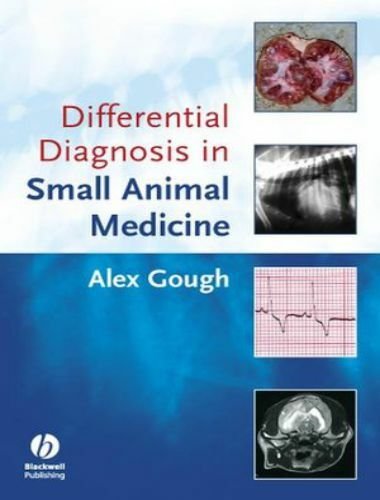Differential Diagnosis in Small Animal Medicine
Author: Alexander Gough Publication date: 2007 File Type PDF

This book Differential Diagnosis in Small Animal Medicine was written to fill what I felt was a gap in the market. While working up difficult medical cases, I have often wanted a single ready reference to help me formulate a differential list from the clinical information I have available.
Unfortunately, I found myself frequently having to consult multiple textbooks to bring all the information I needed together. I decided therefore to write a book that would serve as a ready reference for differential diagnoses of the majority of presentations that are encountered in practice, including both common and uncommon conditions. This text should be of use to veterinary students, general practitioners, university interns, residents and anyone who, like me, cannot fully carry these lists around in their heads. I hope other clinicians find it as useful as I do.
The differential diagnosis list is one of the most important aspects of the problem-oriented approach to clinical diagnosis. For those who are not familiar with the problem-oriented approach, a brief outline follows.
As the name implies, problem-oriented medical management (POMM), concentrates on the individual problems of a patient. A differential diagnosis list should be made for each and every problem that is found in a patient, whether in the history, the physical examination, imaging or clinicopathological tests. Although superficially this may not sound very ‘holistic’, in fact, if all the patient’s problems are considered individually, the whole patient will have been evaluated, without falling into the trap of presuming that all of the findings are caused by a single condition.
The problem-oriented approach starts with a detailed history, and it is important to discover what the owners perceive to be the main problems – after all, they usually know their animal better than the clinician does. However, there may be relevant historical signs that the owners had not considered significant, so failing to systematically ask all the questions which could be of importance in a case can lead to overlooking important information. Using a checklist or form, such as the one in Appendix A can be useful as an aide-memoire.
In every case, a detailed physical examination should be carried out, including body systems that are not apparently of immediate concern. Again, a checklist or form, such as the one in Appendix B, can help ensure a systematic approach.
Direct Link For Paid Membership: –
This Book is Available For Premium Members Only (Register Here)
Unlock 3000+ Veterinary eBooks or Go To Free Download
Direct Link For Free Membership: –
| Book Name: | Differential Diagnosis in Small Animal Medicine | |
| File Size: | 6 MB | |
| File Format: | ||
| Download Link: | Click Here | |
| Password: | PDFLibrary.Net (if Required) | |
